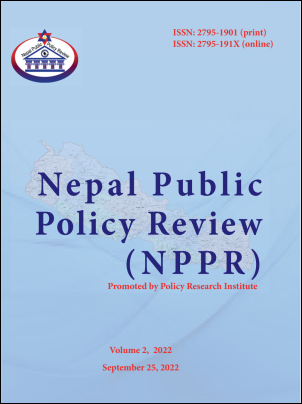Understanding Policy Coherence and Interplay Governing Biodiversity Conservation and Associated Livelihood Practices in Karnali Province, Nepal
Keywords:
Karnali Province, Biodiversity conservation, Policy gapAbstract
One of Nepal's most significant strategies for biodiversity protection is biodiversity conservation policy. Despite a significant paradigm shift in Nepalese policies and huge success in community-based conservation, conservation efficiency and proficiency remain low in Karnali. This pause results in ineffective policy implementation. Through a literature analysis, this study seeks to assess policy coherence and challenges within three levels of government conservation policies. The findings show that the components of central top-down non-participatory biodiversity conservation policies share consistent characteristics, such as the use of multiple policy tools, which can be either macro or micro, as well as short-term or long-term policies involving multiple actors at multiple levels. These policies often complement one another regarding the ownership, use, and management of natural resources, particularly forests. However, various findings have highlighted discrepancies, overlaps, and shortcomings in biodiversity protection and commonly shared resources. Despite global recognition as Important Bird Areas and the growing ecological concern of global and national conservation societies in Jajarkot, Jumla, Humla, Dolpa, and Kalikot, it is still not reflected fully in relevant federal policies. There is a lack of a specific policy agenda and responsive policies with federal, provincial, and local governments to promote its conservation. Hence, the paper's discussion considers active community participation as the applicable measure for integrated biodiversity conservation and development strategies with greater conservation impact.
Downloads
Downloads
Published
How to Cite
Issue
Section
License
Copyright (c) 2022 Badri Baral, Bina Ghimire, Dipak Raj Basnet

This work is licensed under a Creative Commons Attribution-NonCommercial 4.0 International License.





